Awareness of the Unseen Mind and Body After The Trauma of a Scam
When the Unseen Becomes Unbearable Because of Injury or Trauma: Heidegger’s Insights into Trauma and Bodily Awareness
Primary Category: Scam Victims Recovery Philosophy
Intended Audience: Scam Victims-Survivors / Family & Friends
Author:
• Vianey Gonzalez B.Sc(Psych) – Licensed Psychologist, Specialty in Crime Victim Trauma Therapy, Neuropsychologist, Certified Deception Professional, Psychology Advisory Panel & Director of the Society of Citizens Against Relationship Scams Inc.
• Tim McGuinness, Ph.D., DFin, MCPO, MAnth – Anthropologist, Scientist, Polymath, Director of the Society of Citizens Against Relationship Scams Inc.
About This Article
After a traumatic experience, what was once invisible—your body, your thoughts, your emotional balance—becomes unavoidably present. The seamless functioning of your mind and body is disrupted, and you’re suddenly forced to confront parts of yourself you never had to manage before. Through the lens of Heidegger’s philosophy, this shift from unconscious ease to conscious awareness is not just a breakdown—it’s also an opening. The pain of hyper-awareness, of feeling your own mind and body as fragile, alien, or untrustworthy, is deeply disorienting.
But it’s also the beginning of rebuilding with intention. Rather than trying to erase what was lost, you begin to assemble a new understanding of yourself—one that includes the damage, honors the disruption, and creates space for authentic living. Heidegger helps us see that this movement from “ready-to-hand” to “present-at-hand” is not a detour from life but a deeper engagement with it. In facing what we once took for granted, we cultivate not just recovery, but a grounded form of wisdom—one rooted in presence, clarity, and the quiet courage to keep going.
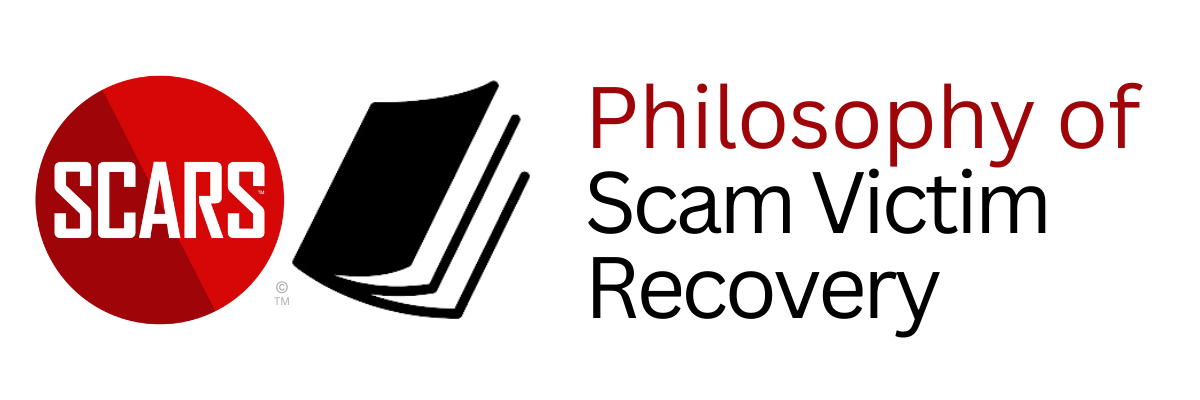
When the Unseen Becomes Unbearable Because of Injury or Trauma: Heidegger’s Insights into Trauma and Bodily Awareness
We take our body and mind for granted as something unseen. Out of sight, out of mind, until …
In the rhythm of daily life, our bodies and minds function as seamless instruments, enabling us to navigate the world without conscious attention to their operations. This effortless engagement allows us to focus on our tasks, relationships, and aspirations, seldom pausing to consider the underlying mechanisms that make such engagement possible. However, when we encounter emotional trauma or catastrophic events, this harmony is disrupted. Suddenly, we become acutely aware of every facet of our emotional, psychological, and physical existence. This heightened self-awareness can be overwhelming, challenging our sense of normalcy and well-being. To understand this profound shift, we can turn to the philosophy of Martin Heidegger, whose concepts of “ready-to-hand” and “present-at-hand” offer valuable insights into our experiences of health, illness, and trauma.
The Invisible Apparatus: Living in Readiness-to-Hand
In Being and Time, Martin Heidegger introduces the concept of ready-to-hand (Zuhandenheit) to describe how we usually interact with the world—not by analyzing it intellectually, but by being immersed in practical activity. When something is ready-to-hand, it functions so fluidly within our daily use that we don’t notice it. Our attention is not directed at the object itself, but rather at the task we’re engaged in. A simple example is the way a skilled carpenter uses a hammer. In the midst of work, the hammer is not perceived as a separate object to be examined—it becomes an extension of the hand. The act of hammering is not interrupted by thoughts about the tool; the hammer “disappears” into the activity itself.
This concept does more than explain tool use. It reveals how, for most of us, much of life unfolds without direct focus on the structures and systems that support it. We drive cars, hold conversations, walk down the street, and type on keyboards without consciously thinking about the muscles, neurons, and attention that make it all possible. Our bodies, like the carpenter’s hammer, become transparent in use. Our minds, likewise, conduct internal dialogues, make judgments, recall information, and regulate emotion without demanding constant scrutiny. This invisibility is a hallmark of well-being.
We can extend Heidegger’s point even further. The state of ready-to-hand encompasses not only physical tools and bodily processes but also habits, beliefs, relationships, and social roles. These elements serve as familiar structures we rely on without questioning. They help orient us in the world and guide our actions, quietly and unobtrusively. The fact that they are unnoticed doesn’t make them unimportant—it makes them integral. In a well-functioning life, the unnoticed is what enables us to act smoothly, intuitively, and efficiently.
This is especially true of the body. When we are healthy, we are not “in” our body in a conscious sense—we are through it. We are absorbed in the world, acting and reacting fluidly. You don’t think about your knee when it bends correctly. You don’t analyze your heartbeat unless it skips or races. You don’t contemplate your breathing until it becomes labored. And you certainly don’t consider your psychological framework—your self-image, emotional regulation, or decision-making processes—unless something causes them to falter. In that invisibility lies the comfort of normalcy.
But the moment this seamless operation is interrupted, the balance shifts. What was once invisible becomes visible. What was intuitive becomes clumsy. What was background moves to the foreground. Heidegger’s insight here is both philosophical and practical: when something ceases to function, it ceases to be transparent. This transition—from background to object of concern—is what prepares the ground for the painful confrontation that follows trauma, illness, or emotional crisis.
Most people do not appreciate the extent to which their daily life depends on this invisible apparatus of bodily and psychological readiness. We trust it without thinking. And when it’s working, that’s exactly how it should be. But the fact that it can become disrupted—and that when it does, it demands our full attention—is central to understanding the disorientation of trauma. This makes Heidegger’s concept more than abstract theory. It is a blueprint for understanding the difference between living fully and suddenly being forced to observe, monitor, and manage every aspect of existence.
In short, to be in a state of ready-to-hand is to move through life without friction—without the weight of reflection pressing down on every action. It is to be in the world rather than observing it. It is to act from a place of seamless integration with your environment, your tools, and your own body. And for those who have experienced disruption, understanding what this state felt like—before everything changed—can be a necessary step in learning what was lost, and what can possibly be rebuilt.
Disruption and Disclosure: The Shift to Presence-at-Hand
The tranquility of this unselfconscious existence is shattered when we encounter illness or emotional trauma. Heidegger describes a shift from “ready-to-hand” to “present-at-hand” (Vorhandenheit) that occurs when the tools or systems we rely on malfunction or break down. When a tool breaks, it no longer serves its function invisibly; instead, it demands our attention as an object of scrutiny. The carpenter, faced with a broken hammer, must now focus on the hammer itself rather than the task of hammering.
Similarly, when we fall ill or experience emotional distress, our bodies and minds, once taken for granted, become sources of discomfort and focus. A person suffering from chronic pain becomes acutely aware of the affected body part, just as someone grappling with anxiety or depression becomes intensely conscious of their mental state. The previously transparent aspects of our being now impose themselves upon us, disrupting our engagement with the world and compelling us to confront our vulnerabilities.
Emotional Trauma: The Body and Mind as Foreign Entities
Emotional trauma, in particular, can profoundly alter our relationship with our own being. The sudden loss of a loved one, a devastating personal failure, or exposure to a life-threatening event can thrust us into a state where our emotions and thoughts become overwhelming and intrusive. We may experience heightened bodily sensations—racing heart, shallow breathing, muscle tension—that were previously automatic and unnoticed. Our minds may fixate on distressing thoughts, memories, or fears, making it difficult to engage with daily activities.
In such moments, our bodies and minds feel alien to us, as if we are no longer in control of our own being. This experience aligns with Heidegger’s notion of “unhomelike being-in-the-world,” where the familiar becomes unfamiliar, and we feel estranged from our own existence. The world, once a place of comfort and engagement, now appears threatening and disjointed.
Anxiety and the Confrontation with Nothingness
Heidegger delves deeply into the concept of anxiety (Angst), distinguishing it from fear. While fear has an identifiable object—something specific that we are afraid of—anxiety is a more diffuse, objectless state. It arises when we confront the inherent uncertainties of existence and the realization of our own mortality. In anxiety, the structures that give our lives meaning and coherence seem to dissolve, leaving us face-to-face with “nothingness.”
This confrontation can be paralyzing. The routines and roles that once defined us lose their significance, and we are left questioning the very foundations of our being. Emotional trauma often precipitates such existential anxiety, stripping away the illusions of permanence and control that we construct around our lives. We are compelled to confront the fragility of our existence and the transient nature of our experiences.
Confronting the Unseen Mind
One of the most disorienting aspects of trauma is the sudden awareness that your mind—something once invisible and automatic—has become unstable. Before the trauma, your thoughts, memories, and decisions flowed with a kind of seamlessness. You didn’t think of your mind as something distinct. It was just “you.” It processed your environment, made sense of your relationships, and helped you carry out daily tasks without demanding attention. But when trauma strikes—whether through loss, betrayal, fear, or violation—that seamless operation collapses. The mind, like a broken tool in Heidegger’s framework, stops working in the background and forces itself into the foreground as a problem to be solved. You are no longer just living. You are trying to manage, fix, and understand your own mental process in real time.
This confrontation is deeply unsettling. For most of your life, your mind has been something you used, not something you examined. You may have occasionally questioned a belief, reflected on a decision, or puzzled over a feeling, but you didn’t feel as though your entire internal landscape was under threat. After trauma, that changes. You might question your ability to interpret reality, to remember things accurately, to regulate your emotions, or to trust your intuition. You begin to look at your own thoughts and wonder: Is this normal? Is this true? Is this me? That kind of scrutiny creates a deep fracture in your sense of identity. Your mind is no longer something you trust. It is something you watch—and often, something you fear.
This fear creates another layer of trauma. Not only have you been hurt by what happened—you are now destabilized by how your own mind is responding to it. Racing thoughts, intrusive memories, emotional flooding, panic attacks, brain fog, emotional numbness—these are not just symptoms. They are reminders that the system you once relied on without question is no longer functioning as expected. You are forced into a position of internal surveillance, analyzing your own moods, behaviors, and reactions, often with judgment or dread. The mind has gone from being your home to being your battleground.
And yet, this confrontation—painful as it is—is also the beginning of awareness. Heidegger reminds us that breakdown reveals structure. When something stops working, we begin to see how it was put together. That principle applies just as much to the mind as it does to any physical object. When trauma disrupts your mental equilibrium, it exposes the architecture of thought you previously took for granted. You begin to notice how you interpret situations, how you regulate emotion, how you cope with stress, how you seek safety. You see the mechanisms. And while that is exhausting, it is also the start of healing. Because once you see it, you can begin the slow work of rebuilding it.
This rebuilding process is not mechanical. You don’t fix the mind like a broken machine. You attend to it. You study it with patience and care. You re-establish trust in small increments. You begin to separate what is a trauma response from what is your authentic self. You begin to test new ways of thinking, of soothing, of making sense of your experience. You give yourself permission to not know the answers. You learn how to witness your thoughts without drowning in them. Over time, with enough repetition and reflection, the mind begins to stabilize. It doesn’t return to what it was. But it becomes something new—something more conscious, more grounded, more resilient.
What was once invisible has now been revealed. The mind, once taken for granted, has become an object of attention and care. And while that may never feel as natural or seamless as it once did, it can become something deeper: a relationship. One built not on automatic function, but on compassion, honesty, and deliberate stewardship. In Heideggerian terms, the movement from ready-to-hand to present-at-hand is not the end of the story. It is the middle—the moment of disorientation that opens the possibility for a more authentic engagement with what it means to exist.
The Somatic Experience of Psychological Distress
The body is not just a vessel through which we experience life—it is the very medium of our being-in-the-world. When emotional trauma strikes, that medium often begins to falter in ways that are hard to ignore. The interplay between psychological suffering and physical sensation becomes undeniable. What begins as emotional disturbance—shock, grief, betrayal—often settles into the body, showing up as chronic muscle tension, migraines, chest tightness, gastrointestinal distress, insomnia, or fatigue. These are not imagined symptoms. They are the body’s way of expressing what the mind cannot yet process. Suddenly, your internal world is no longer a quiet backdrop. It is loud, erratic, and consuming.
This somatic disruption forces a shift in awareness. Heidegger’s concept of the “ready-to-hand” no longer applies. The body that once allowed you to move through your day without conscious effort now demands constant attention. Each breath may feel strained. Each heartbeat may seem too fast or too loud. Hunger may disappear. Sleep may become elusive. What was once automatic is now scrutinized, measured, and sometimes feared. The body, like a broken tool, stops facilitating engagement with the world and instead becomes an object that interrupts it.
Philosopher Havi Carel builds on Heidegger’s ideas to describe how illness—and by extension, trauma—alters our embodied experience. She argues that disruptions in physical or emotional health force us into a new relationship with our bodies, one that is marked not by fluidity but by friction. Illness or psychological distress makes the body present in an uncomfortable way. You can’t forget it. You can’t ignore it. You have to reckon with it. That reckoning becomes a daily task—often invisible to others, but all-consuming for the person going through it.
This constant bodily awareness can be exhausting. The mind, already overwhelmed by the emotional weight of trauma, now has to manage the physical manifestations of that pain. You may find yourself researching symptoms, doubting your own health, or withdrawing from everyday activities because your body no longer feels trustworthy. This is not weakness—it is a normal response to an abnormal experience. The body is attempting to protect itself by signaling distress, even if it doesn’t know how to turn those signals off.
Yet within this difficult process lies the potential for transformation. The very act of noticing, of becoming aware of your body and its signals, creates an opening for self-care and self-regulation. Practices like grounding, breathwork, stretching, or simply placing a hand on your chest can help re-establish a sense of internal safety. This doesn’t erase the trauma, but it does begin to restore a sense of agency over how you live inside your own body. As Heidegger and Carel suggest, when the structure of being breaks down, we are given the chance—not the guarantee, but the chance—to rebuild it with greater intentionality and presence.
Navigating the Disruption: Toward a New Equilibrium
Recovering from trauma is not a return to how things were. It’s a reconstruction—a conscious, often painful reorientation of how you relate to your body, your mind, and the world around you. Heidegger’s philosophy doesn’t offer comfort in the conventional sense, but it does offer clarity. He reminds us that disruption is not a detour from life; it is part of life. The breakdown of our previously invisible, functioning selves—what he describes as the shift from “ready-to-hand” to “present-at-hand”—is not the end of being. It is a call to engage differently. To see clearly. To live more deliberately.
This new engagement does not begin with denial. It begins with acceptance—not in the sense of resignation, but in the sense of recognition. You must first acknowledge that the trauma has changed you. That your perception of your body, your thoughts, your emotions, and your place in the world has shifted. This acknowledgment is not easy. It may feel like weakness. It may feel like loss. But it is actually the beginning of strength. As Heidegger would suggest, only by facing our thrownness—our condition of being cast into a world we did not choose—can we begin to exercise agency within it.
Rebuilding your being-in-the-world requires more than reflection. It demands practice. For some, this might mean turning to therapy or structured support groups. For others, it may involve creative expression, journaling, movement, or spiritual inquiry. What matters is not the form, but the function: choosing activities that reconnect you with the present moment and allow you to integrate your changed self into a coherent narrative. That narrative may include pain, but it also includes survival. And survival is never meaningless.
This process is not linear. There will be days when your body feels foreign, your thoughts feel fractured, and your emotions feel unmanageable. But there will also be days—sometimes unexpectedly—when you notice the weight lifting, even briefly. When a conversation flows without effort. When your body feels like yours again. When the world seems navigable, even if only for a little while. These moments are not illusions. They are glimpses of equilibrium—signs that the structure of your being is adapting, not collapsing.
Importantly, this adaptation does not require you to discard your trauma. Heidegger’s philosophy encourages a more honest form of healing—one that integrates disruption rather than erasing it. You are not returning to a previous version of yourself. That version may no longer exist. What you are doing is reassembling—using the materials of your past, the tools of your present, and the vision of your future to build something sustainable. Something real.
And in that act of rebuilding, you are not just surviving trauma. You are answering it. With presence. With clarity. With a kind of courage that doesn’t always look like strength, but always demands truth. That is what it means to find a new equilibrium—not by forgetting what broke, but by living fully in the wake of it.
Conclusion: When Awareness Becomes a Kind of Wisdom
Trauma doesn’t just disrupt your life—it reveals it. What once ran smoothly, quietly, invisibly, is suddenly exposed: the rhythms of your body, the structure of your thoughts, the fragility of the systems you relied on without question. Martin Heidegger’s philosophy gives language to this shift. His distinction between “ready-to-hand” and “present-at-hand” is more than a theoretical framework—it’s a reflection of lived experience. When trauma hits, what was once intuitive and fluid becomes conscious and effortful. The body becomes a question. The mind becomes a riddle. Life, which once flowed naturally, becomes something you must navigate with intention and care.
But in this painful exposure lies an opportunity. Not to erase what happened, or to return to what was—but to build a new kind of relationship with yourself. One where your awareness is not a burden, but a source of grounding. One where your body is not an enemy, but a signal system. One where your mind, though once fractured, becomes a companion you tend to with patience and respect. You do not have to be whole to be healing. You do not have to be free of pain to live meaningfully. You simply have to stay present to what is—and keep choosing, gently and consistently, to rebuild.
Heidegger reminds us that authenticity emerges not from comfort, but from confrontation. When we stop avoiding our vulnerability—when we turn toward the broken places with eyes open—we become capable of a deeper kind of existence. One shaped not by illusion, but by truth. One guided not by the need to return to a past self, but by the possibility of becoming someone new: not in spite of the pain, but because of how fully we’ve lived through it.
The mind you once took for granted, the body you once ignored—these are no longer invisible. They are part of your daily reality now. And while that may never feel easy, it can become something else: a practice, a partnership, even a quiet kind of wisdom. You are not broken. You are changed. And through that change, you are finding your way—not back to who you were, but forward into someone who lives with eyes wide open, rooted in reality, resilient in truth. That is not only recovery. That is transformation.
Reference
Martin Heidegger
Martin Heidegger (1889–1976) was a German philosopher widely regarded as one of the most influential figures in 20th-century philosophy. Best known for his seminal work Being and Time (1927), Heidegger explored the nature of existence, human consciousness, and the concept of “being.” His philosophical approach, often associated with existentialism and phenomenology, emphasized the lived experience of individuals and how they understand their place in the world. Heidegger introduced key concepts such as being-in-the-world, ready-to-hand, and present-at-hand, which reshaped how philosophers think about human engagement with the world. Though his contributions are foundational in modern thought, his legacy is also marked by controversy due to his affiliation with the Nazi Party in the 1930s. Despite this, Heidegger’s work continues to be studied for its deep insights into human existence, authenticity, and the structure of experience.
Havi Carel
Havi Carel is a British philosopher and professor of philosophy at the University of Bristol, known for her work in phenomenology, philosophy of medicine, and the lived experience of illness. Originally from Israel, Carel was diagnosed with a rare lung condition in her thirties, which profoundly shaped her philosophical inquiries into health, embodiment, and vulnerability. Her influential book Illness: The Cry of the Flesh explores how illness disrupts a person’s experience of the world and self, drawing on the phenomenological tradition, especially the work of Martin Heidegger and Maurice Merleau-Ponty. Carel’s scholarship bridges abstract theory and personal insight, offering a compelling framework for understanding the meaning of illness beyond clinical terms. In addition to her academic work, she has been an advocate for incorporating patient perspectives into healthcare education and policy.
Phenomenology
Phenomenology is a branch of philosophy focused on the study of experience from the first-person point of view. It examines how things appear to us through consciousness, before we interpret them through scientific, psychological, or cultural frameworks.
Rather than asking what something is in an abstract sense, phenomenology asks: How is it experienced? What is it like to feel pain, to grieve, to perceive time passing, or to walk through a city street?
Founded by Edmund Husserl in the early 20th century and further developed by thinkers like Martin Heidegger, Maurice Merleau-Ponty, and Jean-Paul Sartre, phenomenology emphasizes that all knowledge begins with subjective, lived experience. It investigates the structures of consciousness—like perception, thought, memory, imagination, emotion—and how these shape our understanding of the world.
In practical terms, phenomenology is used in disciplines like psychology, medicine, sociology, and art to better understand how people actually live through events, rather than how those events are objectively measured. For example, in healthcare, phenomenology can help reveal what it’s like to live with illness, rather than just what symptoms a disease causes.
The goal isn’t to explain experience in scientific terms—but to describe it clearly, faithfully, and without assumptions.
Please Rate This Article
Please Leave Us Your Comment Below
Also, tell us of any topics we might have missed.
-/ 30 /-
What do you think about this?
Please share your thoughts in a comment above!
-/ 30 /-
What do you think about this?
Please share your thoughts in a comment above!
ARTICLE RATING
TABLE OF CONTENTS
CATEGORIES
U.S. & Canada Suicide Lifeline 988
![NavyLogo@4x-81[1] Awareness of the Unseen Mind and Body After The Trauma of a Scam - 2025](https://scamsnow.com/wp-content/uploads/2025/04/NavyLogo@4x-811.png)
ARTICLE META
One Comment
Leave A Comment
Important Information for New Scam Victims
- Please visit www.ScamVictimsSupport.org – a SCARS Website for New Scam Victims & Sextortion Victims.
- SCARS Institute now offers its free, safe, and private Scam Survivor’s Support Community at www.SCARScommunity.org – this is not on a social media platform, it is our own safe & secure platform created by the SCARS Institute especially for scam victims & survivors.
- SCARS Institute now offers a free recovery learning program at www.SCARSeducation.org.
- Please visit www.ScamPsychology.org – to more fully understand the psychological concepts involved in scams and scam victim recovery.
If you are looking for local trauma counselors, please visit counseling.AgainstScams.org
If you need to speak with someone now, you can dial 988 or find phone numbers for crisis hotlines all around the world here: www.opencounseling.com/suicide-hotlines
Statement About Victim Blaming
Some of our articles discuss various aspects of victims. This is both about better understanding victims (the science of victimology) and their behaviors and psychology. This helps us to educate victims/survivors about why these crimes happened and not to blame themselves, better develop recovery programs, and help victims avoid scams in the future. At times, this may sound like blaming the victim, but it does not blame scam victims; we are simply explaining the hows and whys of the experience victims have.
These articles, about the Psychology of Scams or Victim Psychology – meaning that all humans have psychological or cognitive characteristics in common that can either be exploited or work against us – help us all to understand the unique challenges victims face before, during, and after scams, fraud, or cybercrimes. These sometimes talk about some of the vulnerabilities the scammers exploit. Victims rarely have control of them or are even aware of them, until something like a scam happens, and then they can learn how their mind works and how to overcome these mechanisms.
Articles like these help victims and others understand these processes and how to help prevent them from being exploited again or to help them recover more easily by understanding their post-scam behaviors. Learn more about the Psychology of Scams at www.ScamPsychology.org
SCARS INSTITUTE RESOURCES:
If You Have Been Victimized By A Scam Or Cybercrime
♦ If you are a victim of scams, go to www.ScamVictimsSupport.org for real knowledge and help
♦ SCARS Institute now offers its free, safe, and private Scam Survivor’s Support Community at www.SCARScommunity.org – this is not on a social media platform, it is our own safe & secure platform created by the SCARS Institute especially for scam victims & survivors.
♦ Enroll in SCARS Scam Survivor’s School now at www.SCARSeducation.org
♦ To report criminals, visit https://reporting.AgainstScams.org – we will NEVER give your data to money recovery companies like some do!
♦ Follow us and find our podcasts, webinars, and helpful videos on YouTube: https://www.youtube.com/@RomancescamsNowcom
♦ Learn about the Psychology of Scams at www.ScamPsychology.org
♦ Dig deeper into the reality of scams, fraud, and cybercrime at www.ScamsNOW.com and www.RomanceScamsNOW.com
♦ Scam Survivor’s Stories: www.ScamSurvivorStories.org
♦ For Scam Victim Advocates visit www.ScamVictimsAdvocates.org
♦ See more scammer photos on www.ScammerPhotos.com
You can also find the SCARS Institute’s knowledge and information on Facebook, Instagram, X, LinkedIn, and TruthSocial
Psychology Disclaimer:
All articles about psychology and the human brain on this website are for information & education only
The information provided in this and other SCARS articles are intended for educational and self-help purposes only and should not be construed as a substitute for professional therapy or counseling.
Note about Mindfulness: Mindfulness practices have the potential to create psychological distress for some individuals. Please consult a mental health professional or experienced meditation instructor for guidance should you encounter difficulties.
While any self-help techniques outlined herein may be beneficial for scam victims seeking to recover from their experience and move towards recovery, it is important to consult with a qualified mental health professional before initiating any course of action. Each individual’s experience and needs are unique, and what works for one person may not be suitable for another.
Additionally, any approach may not be appropriate for individuals with certain pre-existing mental health conditions or trauma histories. It is advisable to seek guidance from a licensed therapist or counselor who can provide personalized support, guidance, and treatment tailored to your specific needs.
If you are experiencing significant distress or emotional difficulties related to a scam or other traumatic event, please consult your doctor or mental health provider for appropriate care and support.
Also read our SCARS Institute Statement about Professional Care for Scam Victims – click here
If you are in crisis, feeling desperate, or in despair, please call 988 or your local crisis hotline.
More ScamsNOW.com Articles
A Question of Trust
At the SCARS Institute, we invite you to do your own research on the topics we speak about and publish. Our team investigates the subject being discussed, especially when it comes to understanding the scam victims-survivors’ experience. You can do Google searches, but in many cases, you will have to wade through scientific papers and studies. However, remember that biases and perspectives matter and influence the outcome. Regardless, we encourage you to explore these topics as thoroughly as you can for your own awareness.



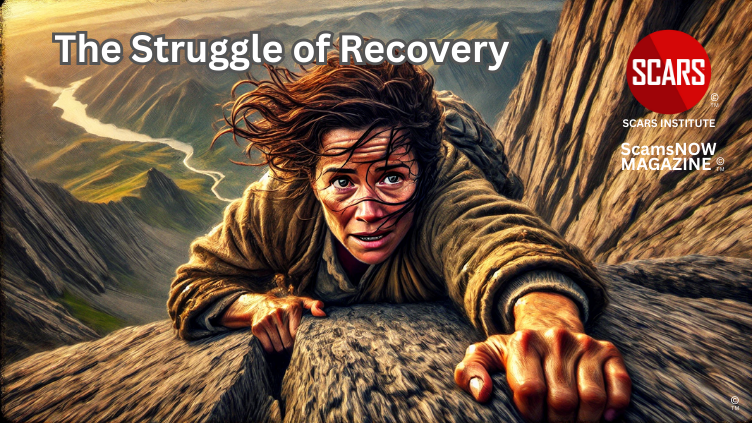

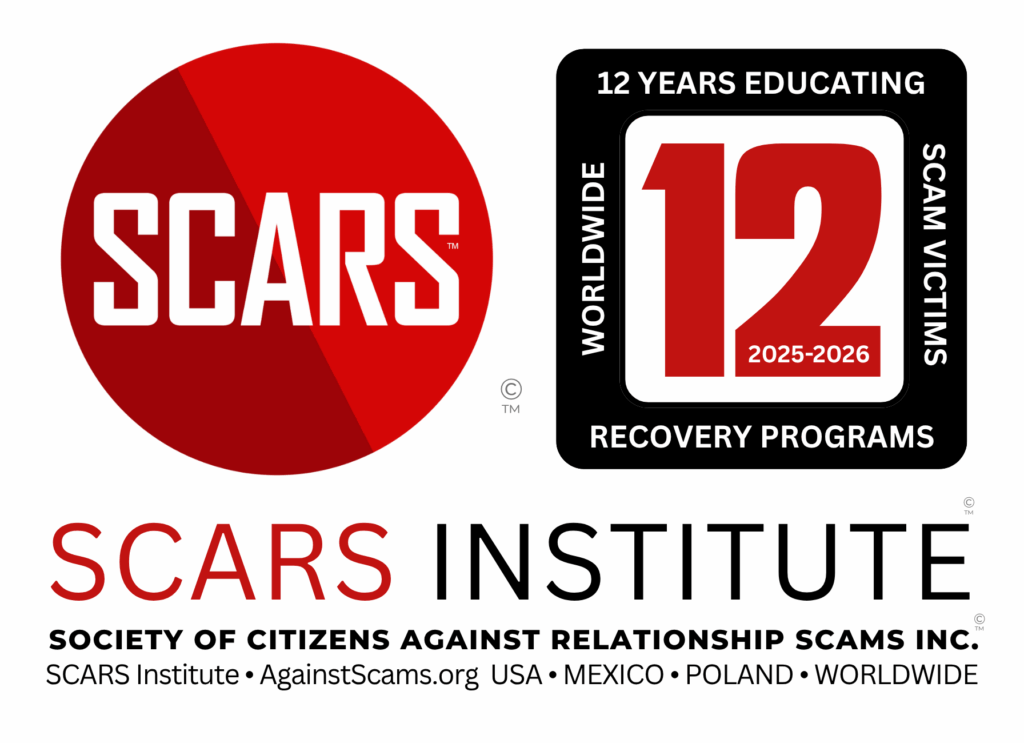




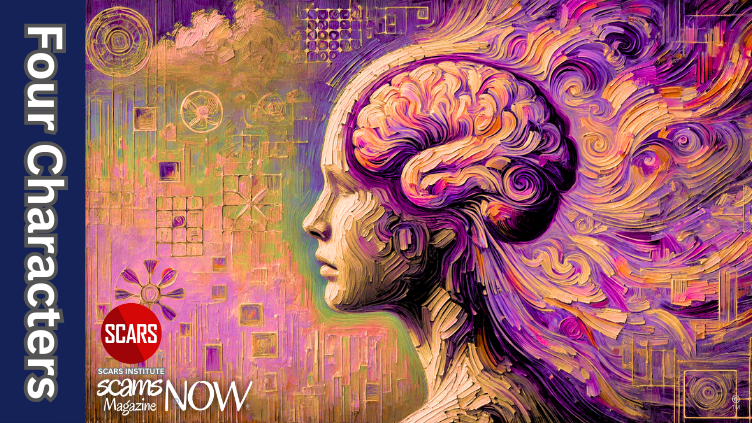




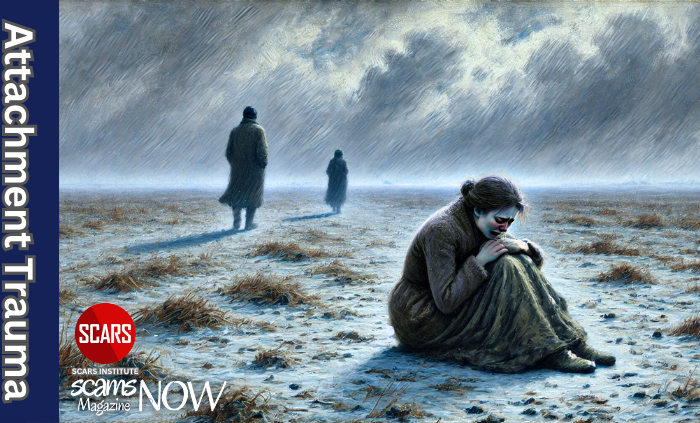


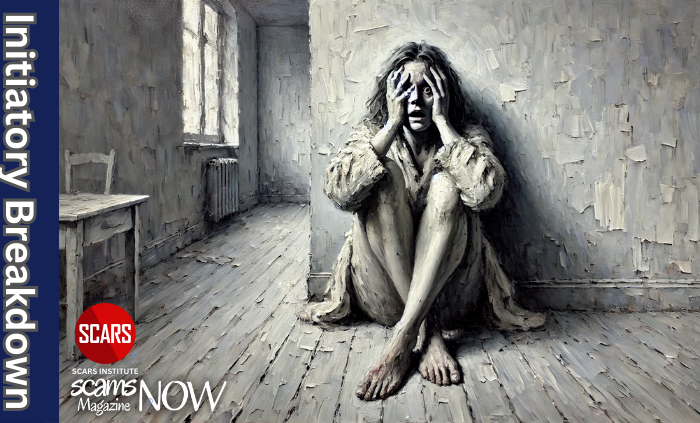





![scars-institute[1] Awareness of the Unseen Mind and Body After The Trauma of a Scam - 2025](https://scamsnow.com/wp-content/uploads/2025/04/scars-institute1.png)
![niprc1.png1_-150×1501-1[1] Awareness of the Unseen Mind and Body After The Trauma of a Scam - 2025](https://scamsnow.com/wp-content/uploads/2025/04/niprc1.png1_-150x1501-11.webp)

The unstable mind you have at first is so disorienting. At least it was for me. Then yes, it affected my body: sleeplessness, brain fog, no ability to focus, exhaustion, and excessive anxiety.
I love the statement at the end of the article that says, “you’re not broken; you’re changed.” It takes time to understand and accept that.